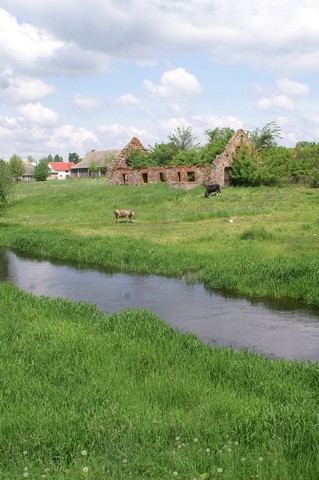Gone were the
wooden shake roof and chimney. The vertical wooden planks and wooden roof that covered
the mikvah bath proper were likewise gone. No remnants of wood remained on the
ground; no doubt, they had been used for some other purpose. Halfway to the
mikvah, I observed that the walls had begun to buckle inwardly in places. Yet
'brick and stone' was not a completely accurate description for the building materials
of this mikvah, rather the exterior walls were of variegated fieldstones,
expertly joined by mortar. The foundation was of red brick as were the window frames,
jambs and the frame of an upper door that once must have exited to a small balcony.
The front façade also held three small circular windows again bordered by brick.
As I drew near the mikvah, the large wooden plank entrance doors still remained
– the right one slightly ajar as if someone had just entered. And so, too, did I
enter. The inside was as overgrown as the outside, tall shrubs as well as weeds and
grass had reclaimed the interior. The mikvah proper was filled with shrubbery.
The river, from which the mikvah once drew its water supply, was now blocked by
a copse of shrubbery trees, suggesting that for a long time the proximity of the
mikvah and river had remained distant. The wrought iron bands that created
multi-squared windows beside and opposite the entrance still remained, the back window
looking out to a farm field that very well may have been a farm field in the past (fig.
3). Inside, too, were the fallen remains of the brick window frames, yet in places the
interior plaster whitewash still remained intact. Remnants of interior walls suggested
a multi-room, two-story structure.
On the ground, too, I discovered the fractured pieces of a once simple but
delicate soft gray lintel that no doubt graced each window (fig. 4). It lay where it
had fallen when the window frames gave way, in pieces like a puzzle that could easily
be connected. But they would not be connected. For though they lay undisturbed the
elements would slowly break down this composite substance, returning it to the earth
from where it had once come. How soon, too, would the remaining walls give way of
their own accord, or perhaps by the farmer whose electric wire line extended past the
back side of the mikvah towards the river, or to construction needs of the tall
brick building nearby? Twenty years had passed since the guidebook's photo and great
changes were evident.
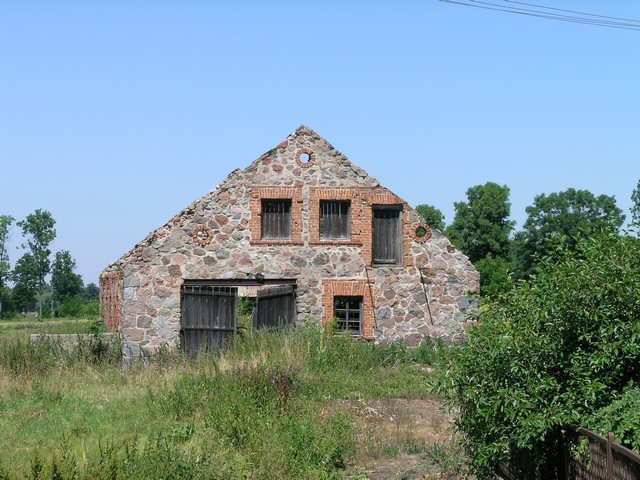
Fig. 2 Bocki mikvah, 2005
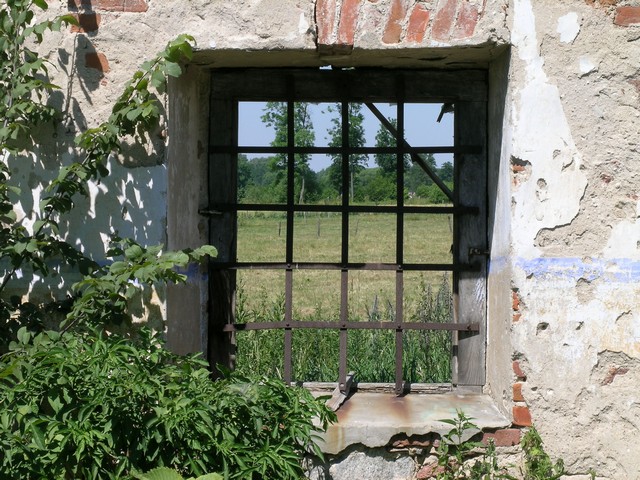
Fig. 3 Interior window, 2005
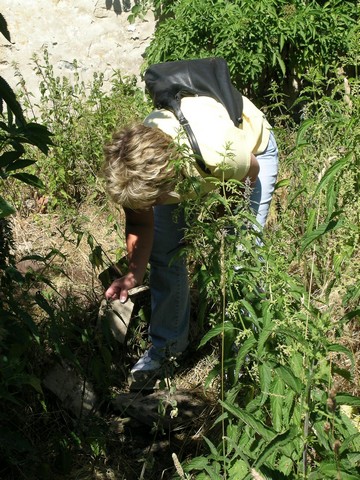
Fig. 4 Fragments of the delicate gray lintel, 2005
Two springs later – May of 2007 – my travels once again took me
through Bocki. The mikvah still stood frozen in time looking nearly as it did
in my snapshots two years earlier save the bush that had grown beside the front
façade (fig. 5). Several fieldstones had fallen from the front and side
facades; the front right door was still ajar. The wrought iron window bands were still
in place. Fragments of the delicate gray composite lintels still lay amidst the
interior shrubbery, still awaiting reconstruction. The only sounds were that of an
occasional vehicle crossing the Nurzec River bridge and the wind softly passing in and
out of the mikvah's paneless windows. No sign or plaque had yet been erected
to remember this structure of Jewish material culture so vital to Bocki's weekly
religious ritual.
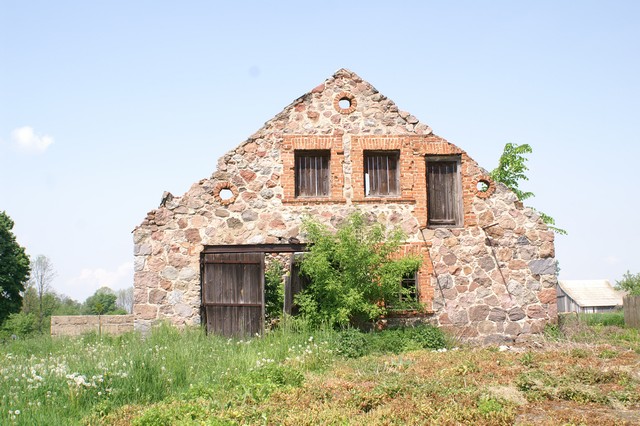
Fig. 5 Bocki mikvah, 2007
Three springs later – May of 2010 – my travels once again brought me
to Bocki. The mikvah still stood but changes were instantly evident (fig. 1,6).
The mikvah appeared to have a roof – but not of wood! In the three years
since my last visit three trees had grown within the mikvah. Their height and
verdure created a canopy of leaves that offered the allusion of a roof. A tree - just
a bush in 2007 – likewise had grown lush and tall at the mikvah's front
façade, obliterating any view of its doors from the bridge. On approaching the
mikvah, however, the front right door was still ajar. On entering the
mikvah the interior was so overgrown that entrance was limited to just the area
adjacent to the doors. More delicate gray lintels had fallen from the windows and were
partially hidden amidst the shrubbery, along with more fieldstones, joined now with red
brick from the foundation and window framework. The mortar of this structure was
likewise eroding. No traces of the white plaster interior walls remained. The
wrought-iron window bands were gone. Outside of the mikvah, the grasses and
stinging nettles grew so tall as to make circumventing the mikvah nearly
impossible. Yet someone now brought greetings. Cows from the nearby farm grazed on
the grasses about the mikvah, literally drawing near to my greeting of "Dzie
Dobry". From the mikvah's window facing the river, a tiny white and burnished-
red barn cat peered out. The red of its fur nearly blended with the window's red brick
frame.
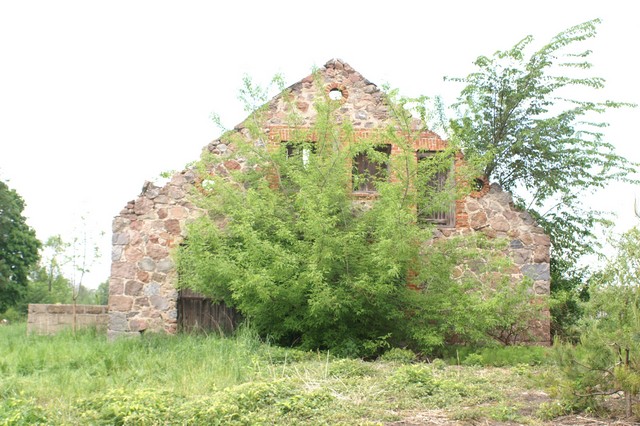
Fig. 6 Bocki mikvah, 2010
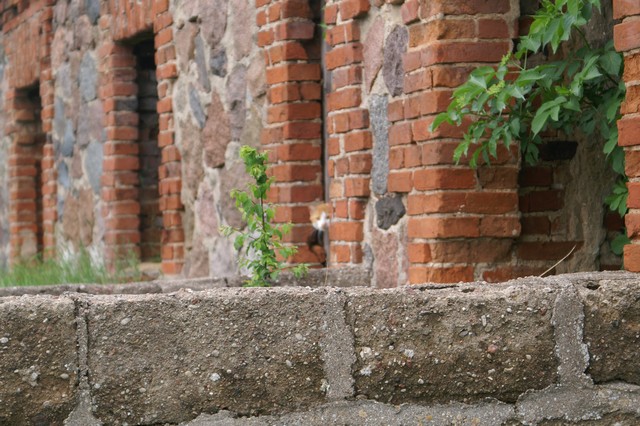
Fig. 7 Bocki mikvah cat, 2010
Approximately 109 kilometers north of Bocki in the urban city of Sokoka a
mikvah still remains, preserved because it was converted into partly apartments
and most recently a television and computer repair shop (fig. 8). No plaque or sign
likewise reminds the visitor of this structure's historic significance. Throughout
Poland occasional mikvot can still be found. For example, in southeastern
Poland the town of Rzeszow still preserves an old mikvah. In Zamosc, the
mikvah is now a jazz club, while in Tarnow the mikvah is a therapeutic
spa. Within the lower level of the Chachmai Yeshivah Lublin, too, there still exists a
mikvah (fig. 9). The yeshivah was renovated and rededicated in 2007, the
mikvah in 2009.4 Each
of these ritual baths, however, is located within large to major urban centers
(Lublin). Bocki's mikvah by contrast is a rare example of pre-Holocaust Jewish
material culture in northeastern Poland that stands unique as perhaps the sole artifact
of a simple shtetl mikvah.
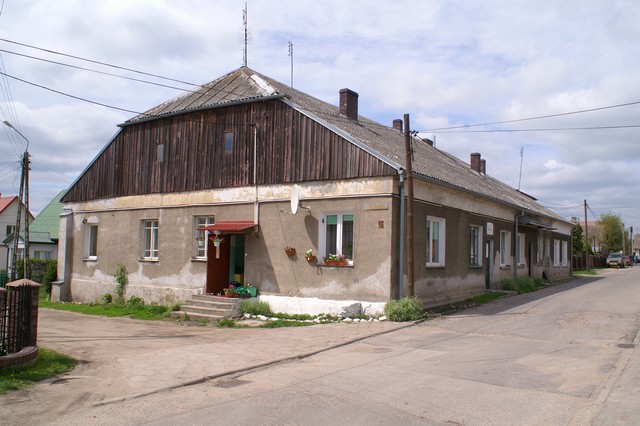
Fig. 8 Sokolka mikvah, 2007
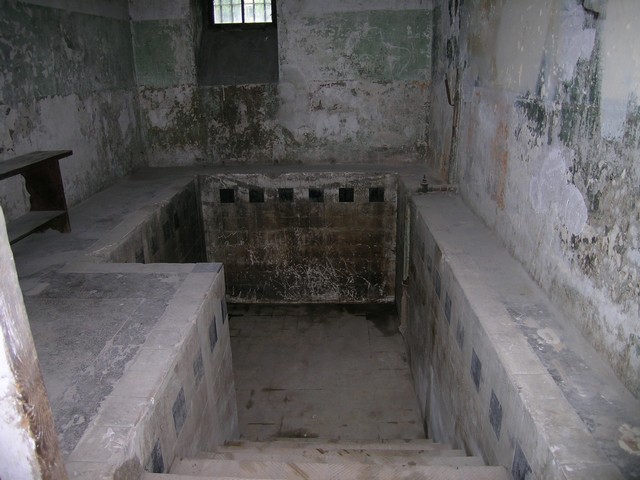
Fig. 9 Lublin mikvah, 2007
As a once student of Near Eastern archaeology, the archaeologist in me insists
that the Bocki mikvah be reconstructed, marked as a historical site along with
any other artifacts of Jewish past in Bocki. The realist in me acknowledges that
throughout Poland, not to mention deeper into Eastern Europe, there are countless other
Jewish heritage sites in need of this same attention. Financially, who can pay for
this undertaking and even if the funds were raised for restoration, who will continue
to care for these sites? Today unbeknownst to many people the Bocki mikvah sits
forgotten near the banks of the small meandering Nurzec River from which its water was
drawn. Five years ago I first saw a 1986 photograph of the Bocki mikvah. Just
a few weeks ago in May of 2010 I beheld this mikvah for the third time in five
years. Its deterioration is ever increasing. No doubt its bricks, its fieldstones,
its mortar and the delicate gray lintels will continue to deteriorate, returning to the
earth. Yet I am fortunate to not once but thrice have walked about and within this
mikvah, to have touched its smooth fieldstones, its course bricks, its sandy
mortar and the delicate gray lintels, and to have gazed from within through its now
paneless windows upon the Nurzec River and the plush green fields beyond. I have been
privileged to experience – if only for a moment – this vestige of Bocki's
Jewish material culture and imagine the shtetl that once was. In doing so
Bocki's mikvah now becomes a place of remembrance rather than a forgotten
structure from a community that is no more (fig. 10).
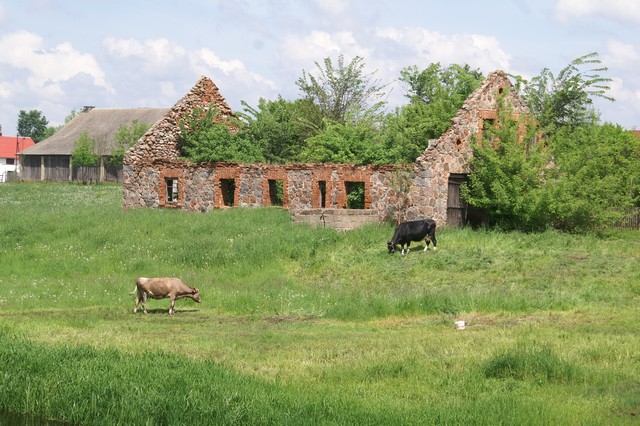
Fig. 10 Bocki mikvah – a place of remembrance, 2010
Heidi M. Szpek, Ph.D. is a Professor of Religious Studies and Philosophy at
Central Washington University (Ellensburg, Washington), currently writing a book on the
Jewish epitaphs from Bialystok, Poland, with an intense interest in the preservation of
Jewish material culture. Her most recent journal articles on Jewish epitaphs include:
"With Whispers, He Spread Torah in the Jewish Magazine (April-May 2010); "Esther of
Bialystok" in The Jewish Magazine (February 2010); "In the Bloodshed of Their Days" in
The Jewish Magazine (January 2010); "Wooden Matzevoth" (with Tomasz Wisniewski) in The
Jewish Magazine (October 2008); "He Walked Upon a Wooden Leg: Epitaphs and Acrostic
Poems on Jewish Tombstones" Legacy of the Holocaust Conference 2007 Conference
Proceedings. Jagiellionian University Press. Krakow, Poland (May 24-26, 2007), 2008;
"'And in Their Death They Were Not Separated': Aesthetics of Jewish Tombstones." The
International Journal of the Humanities. Vol. 5 (2007): 165-178; and "Oh Earth, Do Not
Cover My Blood!": Eastern European Jewish Identity and the Material Culture." The
International Journal of the Humanities. Volume 4.4 (2006): 7-18.
Photograph copyrights: Heidi M. Szpek (photographed by Frank J.
Idzikowski).
